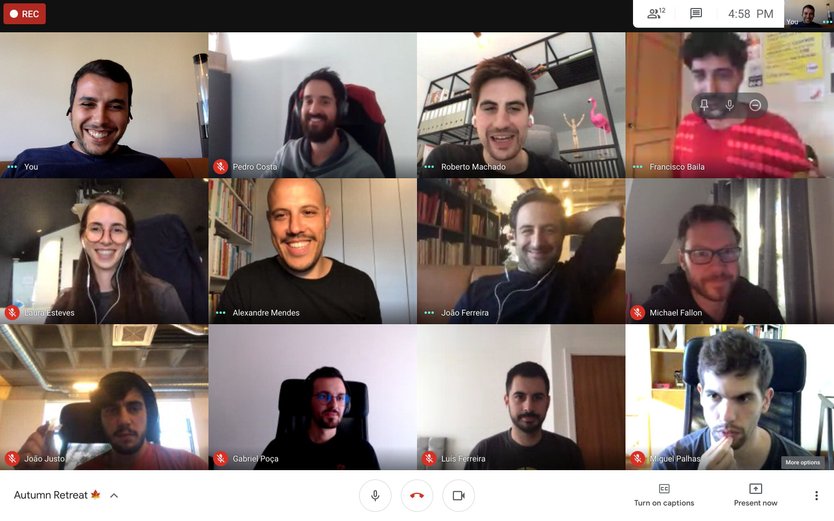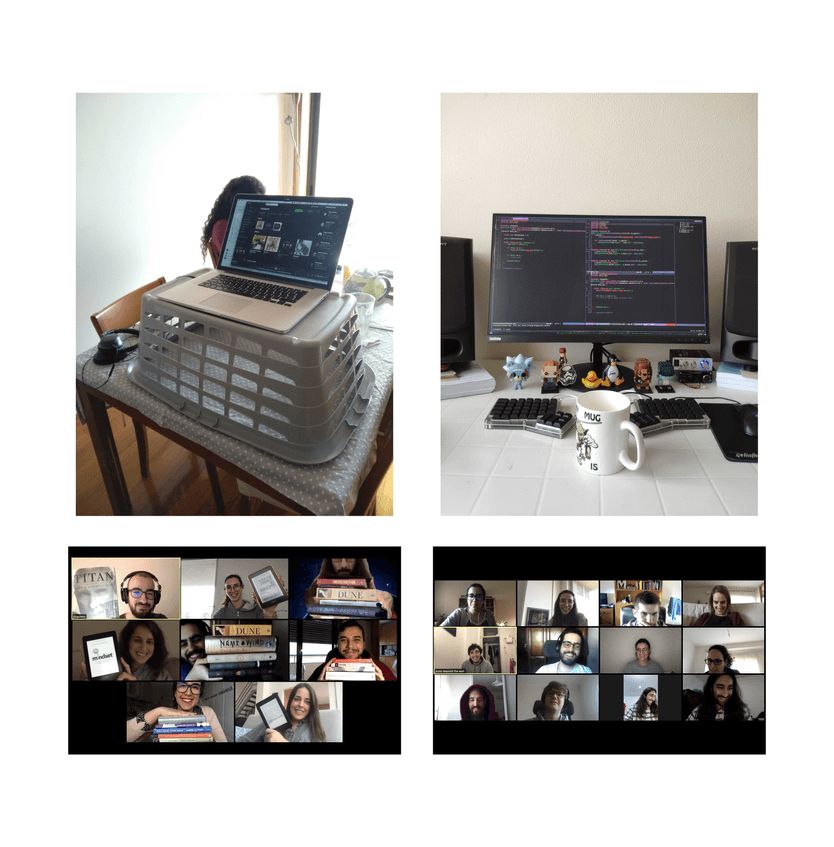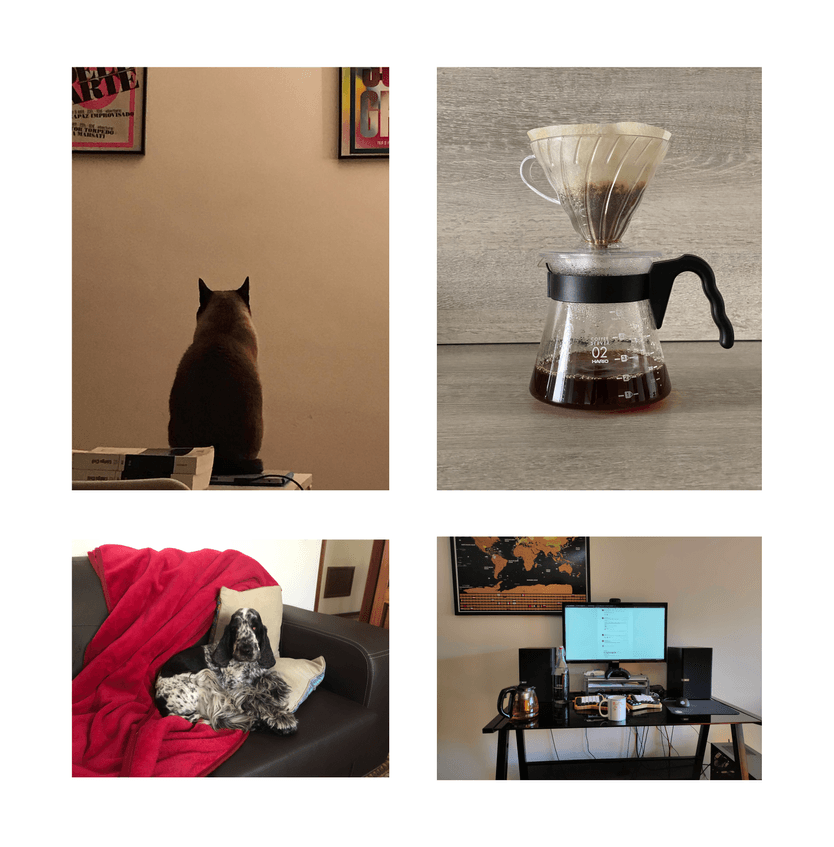We've been remote-friendly since the beginning of the company but, until 2020, we've never had the full team remote.
The pandemics changed our lives drastically and pushed us too to work from home as the lockdown all over the world took place. It was scary, we had a lot of questions about how things would work and most of the time we felt like we were missing so much from not being together in the same space. But, with this newsletter, we want to celebrate this last year and compile what we've learned so far.
Month after month, we started to become a little more comfortable with this new reality, despite missing being together and our constant sharing ideas about our next retreat (that somewhat has been comforting us).
Being a people-centric company, we iterated on our WFH model having our team's feedback and culture on the center.
We care about people, we try to understand their needs, we learn constantly and we give back by sharing.
People are at the center of everything we do, so we started by actively listen to everyone, trying to understand their needs, feelings, and context. Did they had kids at home to take care of? Were they sharing a space with someone else? Did they had an ergonomic setup? Did they live alone (the isolation feeling could be higher for them)?... We started by creating this map of the context of our team members so we could create a more personalized approach.
We also tried to keep a positive approach. Besides, as part of who we are, we embrace change as a constant and we never assume to know everything. So the priority during the first weeks of the lockdown was basically to look at this as a new challenge and an opportunity to learn together.
Once we started to understand how our team was tackling the WFH experience, we started reviewing the foundations of what we defined as a remote-friendly culture:
- Decentralized communication & Transparency - keep information accessible to everyone.
- Asynchronous work - remember that very few things need to be done in a minute.
- Empathy Is Everything - always assume positive intent. Tone and nuance can get lost over chat, so assuming your colleague is coming from a positive place helps with any potential misunderstandings.
- Expect Structure & Rules - establish processes, structure, responsibility, and rules.
Decentralized communication, Transparency & Asynchronous work
To ensure everyone is aligned and has access to the information is a constant concern. But having everyone WFH during this last year forced us to define how, where, why, and when we communicate.
The first tools we started to use on a more regular basis were collaborative tools like Miro and Milanote. We were big fans of post-its and whiteboards during work sessions, we believe we have to give some individual time for brainstorming/feedback moments before starting a discussion. So these kinds of tools helped us recreate the experience of working in the same room and having a shared whiteboard where anyone can share their thoughts.
We also started to make better use of Basecamp for important discussions. We use Slack to share resources, to schedule meetings, to send reminders, to have small discussions, and to have fun at work. But when we want to discuss meaningful topics asynchronously we use Basecamp. We never expect or require to get an answer immediately (unless it's a true emergency), even on Slack, but basecamp helps us to organize the topics and to give the amount of time these meaningful discussions need.
And we also started to use Notion since we felt our documentation was lost between G Drive and Basecamp. So we now have our Handbook, Knowledge base, Processes and Guidelines in the same place. It's our way to ensure our information is organized and easily accessible to anyone.
We use a lot of other tools but those are the ones that really improved our internal communication. And the key learning point about tools and communication is to first seek to understand your needs. Don't try to use a tool just because it seems cool, use it because it will solve a communication problem you and your team are experiencing.
The second key learning point we want to share is that: Asynchronous communication is superior in almost every case. With everyone experiencing cyclical lockdowns, the disruption affects more than people's work life. This means that not only we don't see each other physically anymore, but more often than not our working hours do not overlap. So, the ability to discuss projects and other matters became even more important. We rely heavily on Basecamp to discuss ongoing projects and tasks - where one can participate on their own time - and we use Slack for quick interactions (even if async). Needless to say, when working async you cannot assume anything - to make it work, you need to “spill the beans” and explain things as if you're talking to someone who just landed on planet earth. Communication is even more important, and brings us to the next point: Over-communication always beats under-communication.
Empathy Is Everything
Since lockdowns' early days, we tried to reduce the psychological distance between each other. As we wrote on the introduction, caring, and understanding, are two of our core values. Therefore, we immediately set ourselves up to create virtual events that mitigated the physical distance that was imposed upon us. In the beginning, we tried to replicate what we had at the office; but in time, we found this approach to be flawed because our dynamics had fundamentally changed. This was a big learning for us: replicating what works at the office won't work when everyone is working remotely. Focus on creating new experiences. Hence, we adapted and created new moments for sharing (work-related but also social moments) that took into account the new WFH dynamic. In our cooking challenge Slack channel, we share our recipes and photos of our cooking skills absolutely async. No need to do this in real-time. We created the good, the bad, and the ugly, where we previously fill in a few cards of what went well and not so well during last quarter (async) and discuss this in an online call (sync) with a few beers. These are just two examples. Another key learning is to keep your ears open to your team's feedback and iterate whenever needed. Let them tell you what they like, don't like, and want more of. Just listen.
On an internal level, make sure you're connected and you communicate openly - as said before, default on the excess of communication, and not the opposite - and assure that you leave room for a healthy work-life balance. It's easy to overwork; if needed, push for people to take time off and go on vacations. Ensure absolute disconnection. For many of us these concepts were obvious before last year, but not anymore. Reflect and be conscious of them, pay attention, and ensure you're resting properly - both mentally and physically.
Last but not least, if you're a manager with direct reports, an HR responsible, or someone who's in charge of other people, invest in a cross-team or even cross-company mental health program. This should serve two purposes: first, each individual should be aware of how he/she is dealing with the current situation (isolation, many hours in front of the pc, harder to practice sports, these are some example challenges); and second, the program should also provide low-effort, easy-access, qualified resources to help dealing with a potentially dangerous situation.
Expect Structure & Rules
The lack of a routine and healthy habits can lead you to a more stressful life, poor sleep quality, and, consequently, less productivity and ineffective use of your time.
With the pandemic, we had to not only start to work remotely but we were forced to work at home. And there's a big difference between the two of them. Working remote means you can work from any place you want, WFH means you have to do it at home and (for the majority of us) without the ideal conditions.
There's a lot of traps of WFH, the ones we felt like the most impactful on our daily life were not knowing when to stop working, dealing with all the non-work related distractions, and the ergonomic of our new and improvised workstation.
So, here's Subvisual's lessons learned for WFH:
- Set a schedule and be flexible about it, because unforeseen events will happen. And do not overwork, learn when to quit;
- Get the right equipment. At Subvisual anyone could take material from the office and we also offer a budget so anyone could have a proper space to work;
- Try to separate the office from the rest of the home;
- Don't forget to socialize and call your family and friends;
- Take real breaks during the day;
- Go out for a walk every day (and enjoy the sunny days, your body and mind will thank you ☀️).
Watch, Read, Listen
Here's a collection of useful information about remote work.
- The Future of Work: The Guide to Remote Work
- Increment - Remote (Issue 15)
- GitLab's Guide to All-Remote
- Remote: Office Not Required (Book)
- Lockdown Productivity: Spaceship You
- Going Remote: The Parts No One Tells You
Team photos



Forever learning,
The Subvisual Team.
PS: We're hiring! If you're interested or you know someone who might be, check out our career opportunities here.

